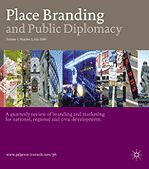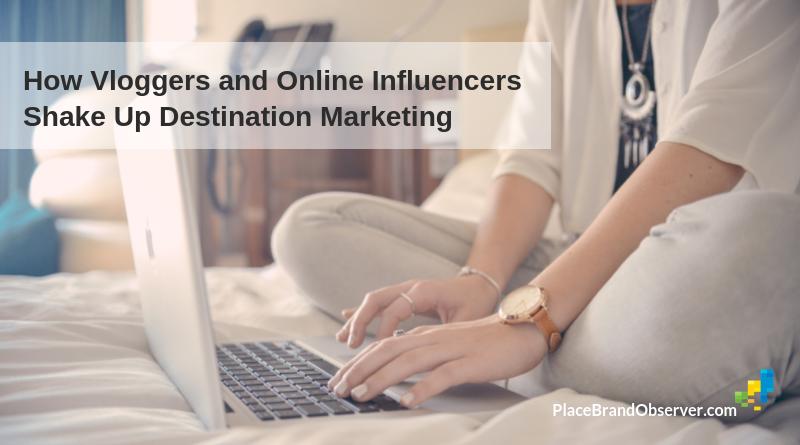Do you know what a Vlogger is? Or how to work with online influencers? Those kind of questions have become very relevant for DMOs around the world. We caught up with Rachel Luna Peralta, Lecturer at the Institute for Tourism Studies in Macau, China, to find out more about her recent research on influencers, destination marketing and how vlogging promotes a destination image, results of which she published in the Journal of Place Branding and Public Diplomacy.
Rachel, which are the main insights from your research?
Travel bloggers and their respective vlogs play a key role in creating online destination image of a place. The four vlogs that I analyzed prove that vlogs help to effectively strengthen a perceived destination image of a place. Travel vlogs are representations of destination experiences which tourism agencies and boards can utilize in their promotional and marketing agenda.
Your advice to destination brand professionals, how to involve video bloggers and online influencers – do’s and don’ts?
Do’s:
- Tap popular travel vloggers, whether foreigners or local, because they have a large following and a captured market.
- Emerging travel vloggers, including local ones, may also provide potential benefits as they start to create their personal brand.
- Allow individual creativity in the use of text, music, and videography.
- Consider creating and training a pool of vloggers who will do the same work as the popular ones.
- Vlog about less known attractions.
- Utilize all available social media, particularly Facebook and Instagram.
Don’t s:
- Don’t engage with a social media influencer who cannot make a long term commitment to you.
- Don’t forget to ensure that your mission statement aligns with the content strategy of the social media influencer.
- Don’t post a vlog without reviewing its content.
What impact does the “instagramability” of a destination have on its competitiveness and reputation?
The “instagramability” of a destination lures many tourists and makes it a popular choice, particularly among younger tourists who are the dominant users of Instagram.
Many tourists trust online reviews posted on social media, such as Instagram and Facebook. Hence, when a destination is “instagramable” and receives positive reviews from travelers, it yields a good online reputation. As a result, the competitiveness of “instagramable” destinations becomes high, generating more tourist expenditures.
How might video bloggers (or online influencers in general) help engage locals in fostering community identity – rather than “just” luring potential visitors to the place?
Vloggers and online influencers may engage locals in fostering community identity by featuring the latter’s unique culture, food, language, textiles, and way of life – using the locals as the main characters in the vlogs.
This makes the video blog more authentic and attractive for tourists. In this way, visitors will be informed about possible ways by which they can authentically make a meaningful exchange of experiences with the locals and enrich their understanding and appreciation of the destination.
Which are the main dangers and pitfalls for destination managers and marketers, linked to video blogging or engaging with social media influencers?
Most of the social media influencers, particularly travel vloggers, are always on the go traveling and featuring other destinations. One of the dangers here when destination managers and marketers engage with popular social media influencers would be the lack of frequent face-to-face coordination and discussion. Although meetings can be held online, the ability to reach and discuss with influencers at a time convenient to the destination managers and marketers may pose some issues and concerns in the long run.
Aside from that, because of the vloggers’ interest in other destinations, it may take some time for them to work on a certain project.
Another danger would be branding. Social media influencers have their own personal brand, and such may not be compatible with the destination image that destination managers and marketers would like to project. Or perhaps, because of the influencer’s personal brand, it may not fit the needs of a certain destination.
Which trends do you observe in Asia, how destinations engage with online influencers? Are those still “hot” or already losing importance in the destination marketing mix?
In Asia, engaging with online influences is still “hot”. Recently, the Department of Tourism in the Philippines has tapped one of the vloggers featured in this study, Kyle Jennerman of BecomingFilipino, to work for the DOT and help promote the Philippines.
In my opinion, this is a good and timely move done by the DOT because Kyle is already a resident in the Southern part of the Philippines and has been going around the country featuring unknown but exquisite places. His familiarity with the locals, food, language, among many other things, makes it easy for him to do this job compared to other vloggers who may be physically unavailable to visit many parts of the archipelago and to immediately feature these in their vlogs.
A long-term relationship with social media influencers is crucial for destination managers and marketers, and vice versa.
Another trend would be the continued rise of social media influencers, whether local or foreigners. Travelers still rely on electronic word-of-mouth and they trust these social media influencers better than anyone else, so social media influencers will remain the biggest magnet that attracts tourists to a destination.
Because of the rising number of social media influencers, competition is also inevitable in terms of attracting followers; hence, creativity is expected to distinguish a compelling vlog from the others.
Which topics linked to video blogging, social media and destination image would you consider important to address in future research?
For future research, it would be important to look at the real attractiveness of vlogs in persuading tourists to visit a destination. It would be worthwhile to test how convincing a vlog is to potential tourists by showing them the vlog and asking them later in an interview whether they will make a purchase decision or not, based on what they viewed.
Another potential research topic would be to analyze engagements in these vlogs based on the comments written by followers on a particular travel vlog. What kind of message are they writing to the vloggers? Are they sharing their own tourist experience of the destination, or are they making some purchase decisions based on that vlog?
Lastly, comparing local and foreign vlogs in terms of promoting a destination image and other factors may also be a worthwhile research undertaking.
Anything else you’d like to mention?
People love stories and as long as people travel, they will never run out of stories. Many stories deserve to be shared, and so travel vlogging may be a way to share and influence others. For destination managers and marketers, a travel vlog is an exquisite mix of characters, plot, and settings, so consider tapping social media influencers, such as Lost LeBlanc, Nas Daily, BecomingFilipino, and Drew Binsky in your marketing method.
Thanks Rachel.
The research article is available here.
Connect with Rachel on LinkedIn or visit the Institute of Tourism Studies website.
 About Place Branding and Public Diplomacy
About Place Branding and Public Diplomacy
Place Branding and Public Diplomacy is the first and only journal to concentrate on the practice of applying brand strategy and other marketing techniques and disciplines to the economic, social, political and cultural development of cities, regions and countries. Edited by Robert Govers and James Pamment.
The Place Brand Observer has teamed up with the journal’s publishers, Springer and Palgrave Macmillan, to share with you key research insights and findings.
Enjoyed this research update on how online influencers and vloggers are shaking up destination marketing strategies – and how DMOs can benefit from this trend? Spread the word!


